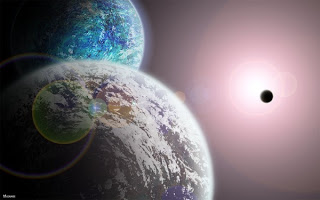NASA’s Pluto-bound New Horizons spacecraft took the first
image of Charon, i.e. largest moon of the Pluto, with the help of highest-resolution
telescopic camera.
Study Further:
Charon, discovered in 1978, is the largest moon of the
Pluto’s five known moons. It is almost the size of Texas State of U.S. and is
covered by ice. Charon is orbiting about 12,000 miles (more than 19,000
kilometers) away from Pluto.
The spacecraft was 550 million miles (885 million km) from
Pluto, when its LOng Range Reconnaissance Imager (LORRI) snapped a total of six
images: three July 1 and three more July 3.
“The image itself might not look very impressive to the
untrained eye, but compared to the discovery images of Charon from Earth, these
‘discovery’ images from New Horizons look great!” said New Horizons Project
Scientist Hal Weaver of the Johns Hopkins University Applied Physics Laboratory
in Laurel, Maryland. “We’re very excited to see Pluto and Charon as separate
objects for the first time from New Horizons.”
“We’re excited to have our first pixel on Charon,” New
Horizons Principal Investigator Alan Stern of the Southwest Research Institute
said, “but two years from now, near closest approach, we’ll have almost a
million pixels on Charon — and I expect we’ll be about a million times happier
too!”
Source:
NewHorizons via Astronomy
+composite+image+shows+the+detection+of+Pluto+largest+moon,+Charon,+cleanly+separated+from+Pluto+itself..jpg)




